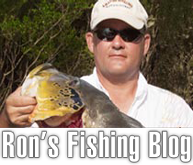 Last week the story ended as I was telling my former high school coach, Tommy Phillips, that I didn’t want to burn up in a fireball when we crashed. I thought about what would happen to the fuselage if the wings were torn off. The door was immediately behind my seat and to the left. I wondered if I would would be killed instantly or maybe knocked unconscious A million things went through my head.
Last week the story ended as I was telling my former high school coach, Tommy Phillips, that I didn’t want to burn up in a fireball when we crashed. I thought about what would happen to the fuselage if the wings were torn off. The door was immediately behind my seat and to the left. I wondered if I would would be killed instantly or maybe knocked unconscious A million things went through my head.
Tommy was still giving me the lowdown on our altitude and how long we had before impact. It seems to me like he gave me 200 feet and maybe 10 minutes to impact. There was still nothing but mesquite trees, cactus, bushes, and lots of rocks and boulders. When two minutes had passed , I felt the airplane making a sharp turn to the right and in about 30 seconds Tommy said “MY GOD! THERE’S A SMALL ROAD!” It just came out of nowhere and then I heard the landing gear go down and the plane started descending very rapidly.
The next thing I knew I felt the wheels touch down and the landing was as smooth as a baby’s butt, nothing like the landing back in Piedras Negras. When we finally came to a stop, I nearly went deaf amidst all the screams, hollering, yelling, laughing, and hugging.I was right in the middle of all the celebrating and doing my share of the yelling and hugging. In nothing flat we were off the plane and down on the ground kissing the ground and hugging one another.
After about five minutes of celebrating, we started looking around to get our bearings. We had no idea of where we were and the truth is we didn’t give a damn. We were alive and that is all we cared about. We were on the ground and safe—absolutely nothing else mattered at all to us. No one can know just how great we all felt unless he has experienced being about to die one moment and then being given more life to live the next moment. After all the excitement I felt that for the rest of my life I would be living on borrowed time.
There I was, standing behind the huge DC3 sitting on this little narrow dirt road when an old Mexican cowboy came riding up on a horse. His eyes were big as silver dollars, staring at us and this huge plane. Within 10 minutes I saw a lot of dust boiling up behind us on the road and in a few minutes up drove an OLD COUNTRY BUS with chickens and pigs tied on top. The bus had no hood or windows. It was loaded down with very poor country people who got out to see this big airplane that blocked the road. On each side of the road was a deep gully, maybe 40 feet deep so everyone felt the bus was stuck on that road along with us and the plane.
In those days I only spoke a little Spanish. I managed to ask the driver where he was taking the people and he answered me but I didn’t understand. I went to our pilot, Bill Hodge, and asked if he knew where we were. He said “more or less east of Chihuahua,” but he really didn’t know. He said he had sent out a mayday before we landed but he doubted it got out to anyone due to the high mountains.
I went back to the bus driver and told him I would give each person on the bus $10 to let us have their seats. He asked them and they agreed immediately as $10 in those days was a lot of money in Mexico. Once again I had to borrow money from Bob and the rest of the guys and they came up with 25 ten dollar bills. I called the people around me and went to handing out money. I must have given out half a dozen bills when I noticed one of the guys had moved around in the circle and had his hand out again. Well, I got all the money back and asked them all to get on board the airplane and have a seat so I could keep up with who had gotten money. They were very reluctant to get on the plane but with a little coaching they got on board and I gave them all the money. They were very happy. In the meantime my group had talked to the driver and offered him $50 to take the bus off in the gully to try and get it around the plane. We had decided the road ran to the North and we felt our best chance was to go north toward the USA.
As the driver very slowly maneuvered the bus down the gully, several guys were betting up to $1000 on whether the bus would turn over and crash or not. A lot of money was bet but remember at this point money didn’t mean one thing to any of us. Well, the bus finally made it up on the road in front of the big plane that just barely fit on that mountain road. Before we took off I went back to the plane and gave away all the steaks, beer, pop, etc., as we had no room to carry all of the stuff. We did manage to take the three outboard motors and our clothes bags but left everything else with the poor people.
We were finally off on the second leg of this exciting Ron Speed Adventure. Man, were we all happy and laughing as our bus rumbled along stirring up a cloud of dust. I finally went to the bus driver and asked him if there were any cities or airports, or bus stations on this road. He replied, “No… nothing.” I asked if there were any trains in the area. He said that this road would cross a set of tracks in a small village called La Mula which was 4 hours away from us. He said the train only ran once a week and didn’t stop, except in Chihuahua. I asked him what day the train ran and he thought a minute and said it ran today and would pass through the village of La Mula in about 4 hours but it wouldn’t help us since it wouldn’t stop. I made him an offer of $25 if he got us to La Mula before the train got to the village. He said he would try and he mashed the foot pedal to the floor.
Let me interject something here…. In the years since this adventure I have come to fully appreciate the hospitality and integrity of the Mexican people. The bus driver and his passengers would have helped without monetary incentives. We were handing out money like there was no tomorrow partly because we were so glad to be alive, partly because we were naive, and partly because we really were asking for a lot!
In about 3 hours, 45 minutes we all arrived in the village of La Mula. It was very small, with maybe 10 or 12 houses and an old saloon. There was no electricity, no cars, no running water and the houses had dirt floors. The one street was full of chickens, dogs, and burro-pulled wood carts. The driver parked the bus about 50 feet off the tracks and told us again that the train wouldn’t stop for us. That’s when Bob offered him $50 to pull the bus up across the train tracks. After a little coaxing, he accepted the $50 and moved the bus across the tracks to stop the train. I found out from a guy in the village that the train only had about 4 cars and one of the cars had a plastic top so passengers could see the countryside. The train was called the Vista Dome and it traveled very fast. I found out that if it was running on time it would arrive in about 25 minutes.
Most of the group went down the street to the saloon and started drinking hot beer and the next thing I knew, my fishermen had paid hefty sums to borrow 4 wood-hauling carts and burros. They started racing the carts down the main street and betting like there was no tomorrow. Everyone was just having a ball, hollering, laughing, joking, and having a great. great time. One guy lost $500 on a race and he told me it was the best money he had ever spent. After about 20 minutes of this great fun we all heard a loud train whistle in the distance.
THIS IS THE END OF PART 2—-NEXT WEEK WILL BE PART 3
Good luck with your fishing and wear that lifejacket.


